




EARTH KNACK
A daily living skills guide using Stone Age techniques for finding and making what you need in your local environment.
 EW OF US ARE REALLY GOING TO CHUCK IT ALL and live as hunter-gatherers in the wilds, like our Stone Age ancestors did. Yet, becoming a modern hunter-gatherer, developing a knack for living with the Earth in any enviornment, is well within our grasp. Using age-old skills, which are still perfectly applicable to our modem lifestyles, can enrich our daily lives and bring high levels of satisfaction and fullfillment.
EW OF US ARE REALLY GOING TO CHUCK IT ALL and live as hunter-gatherers in the wilds, like our Stone Age ancestors did. Yet, becoming a modern hunter-gatherer, developing a knack for living with the Earth in any enviornment, is well within our grasp. Using age-old skills, which are still perfectly applicable to our modem lifestyles, can enrich our daily lives and bring high levels of satisfaction and fullfillment.
This hook is a comprehensive guide to gathering and creating many things to fulfill your daily needs from materials readily at hand. As you assimilate this knowledge into your daily life, you will find the variety of things you can do and make to be endless. You will be able to replace many modern purchased items and foodstuffs with things you gather and create from your local environment. You will also find these Stone Age skills environmentally appropriate and uniquely fulfilling. Besides all this, being paleolithically proficient is a lot of fun!
Developing a knack for living with the Earth is not that difficult, and many people are intrigued by the thought of learning and using Stone Age living skills in their modern lives. Yet it seems the first question most wouldbe paleos ask themselves is, How much time do these skills take? Living in the modern era means our day is dictated by time. Time has, in fact, become our most precious commodity, our most valued resource. Finding, gathering, and making what we need does take time, yet some skills are surprisingly time-efficient.
To address this issue we have chosen projects and techniques where the outcome is more than worth the investment of your time. This is what we call return. Before each new endeavor we ask ourselves, What is the return? Is this a project worth undertaking? Will my time and energy be rewarded? For the items in this book, the answer is Yes! for a variety of reasons. For example, here are just a few projects and activities that have a high return:
It takes only one blow with a hammer stone on a piece of rock to yield a sharp cutting edge.
It takes an hour to gather several pounds of acorns.
Collecting needles for pine needle tea, extremely high in vitamins B and C, is easy.
The soapwort plant grows everywhere in our area. Just add water and rub and your reward will be a rich soapy lather.
Hide glue is one of the strongest glues known and is completely natural.
Of course, there is more to return than just the end result. The process provides return as well. As you explore your environment while gathering materials and foods, a world of lost knowledge opens up to you. Materials, once unknown and therefore unseen, become apparent. As you plan your project or prepare a new food, you find an outlet for creativity. When you use your clay cooking pot, wear your buckskin shirt, or serve steaming hot acorn muffins with chokecherry jelly, you experience a level of satisfaction hard to heat. From the initial gathering and preparation to using the finished product, you experience good return for your time and energy.
There are many other reasons for reaching back to the quickly disappearing skills and arts of the Stone Age. There is a great sense of fulfillment in knowing and using materials in your area to meet your daily needs. Being able to make what you need allows you to choose what you want. No longer are you limited to whats on the store shelf. And being part of the decision, design, and development of your daily needs allows you to bypass the apathy that often follows a new purchase and all too quickly leaves you thinking only about what to buy next. You become part of the process and experience fulfillment along the way as well as pride in the use or consumption of the final product.
We all want to feel capable. Learning and using the Stone Age skills builds self-reliance. Self-esteem increases as you learn to create a comfortable lifestyle. Food, clothing, containers, soap, glue, vitamins, fire, and light become things you can make for yourself. These skills are empowering. Now thats return!
Lets look at the environment. All sides of the political spectrum are talking about it. We are all familiar with the current slogan Reduce, Reuse, Recycle. Incorporating Stone Age skills into our daily lives provides an opportunity to he an example of a conscious and workable environmental philosophy. We become very conscious of the precious resources growing all around us, and we suddenly have a vested interest in keeping them in good condition. That field has our dinner, that hillside our clothing, that gully our tools! This is bioregionalism at its best. We become part and parcel of our environmental community.
Social community takes on a whole new relevance. Each of us has a heritage in the Stone Age no matter what culture we come from, what religion we profess, or what nationality we pledge allegiance to. In a world that divides us in so many ways, here is one common base, a valid basis to build a foundation of community.
Many people today are seeking a stronger spiritual connection and delving into the past for answers. Celtic ritual, Native American ceremony, and Goddess rites are all being probed, studied, and imitated. Stone Age skills were the foundation of the ceremonies, rites, and rituals. We put the cart before the horse when we practice the ancient rituals without first learning the skills from which these rituals sprang. And once you start living some of these ancient skills, youll find you have an inherent, personal knowledge of your spiritual connection to the world.

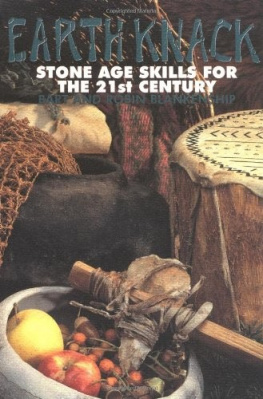
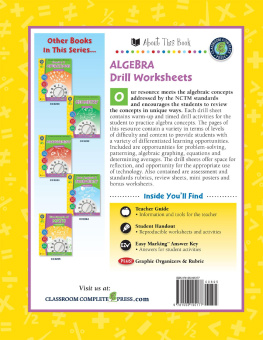

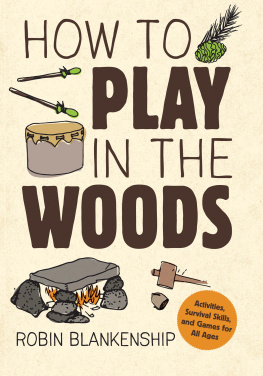
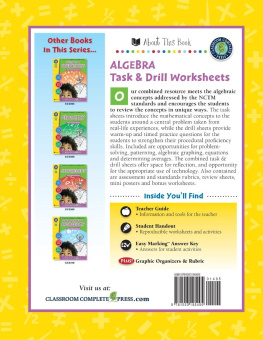
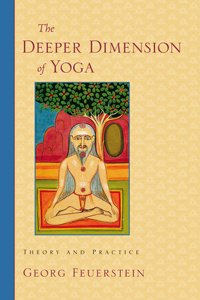


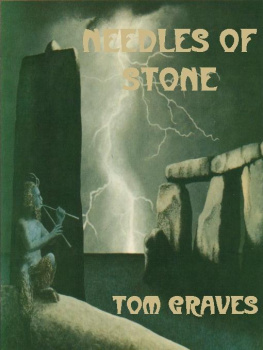

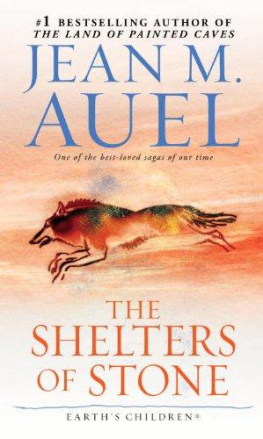
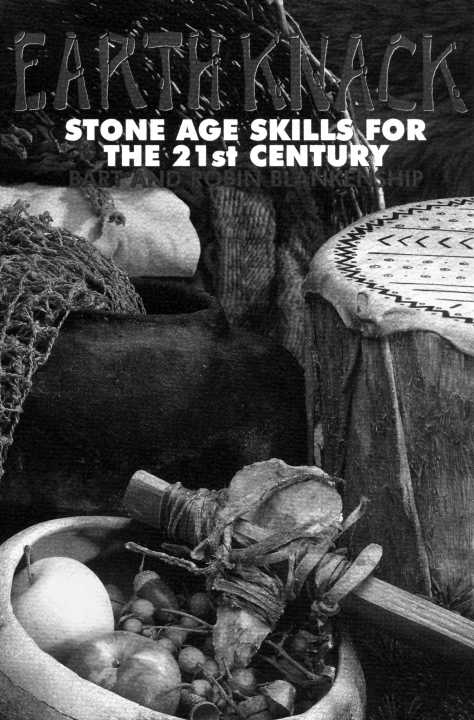

 ART AND ROBIN BLANKENSHIP own and operate Earth 1Knack, a school that teaches Stone Age living skills. Weekend seminars and one- to three-week courses include all the subjects in this book as well as many others, such as bow and arrow, felting, atlatl, fiber sandals, edibles and medicinals, and numerous ways of incorporating these skills into modern lifestyles. If youd like to know more, contact Bart and Robin at the following address:
ART AND ROBIN BLANKENSHIP own and operate Earth 1Knack, a school that teaches Stone Age living skills. Weekend seminars and one- to three-week courses include all the subjects in this book as well as many others, such as bow and arrow, felting, atlatl, fiber sandals, edibles and medicinals, and numerous ways of incorporating these skills into modern lifestyles. If youd like to know more, contact Bart and Robin at the following address:

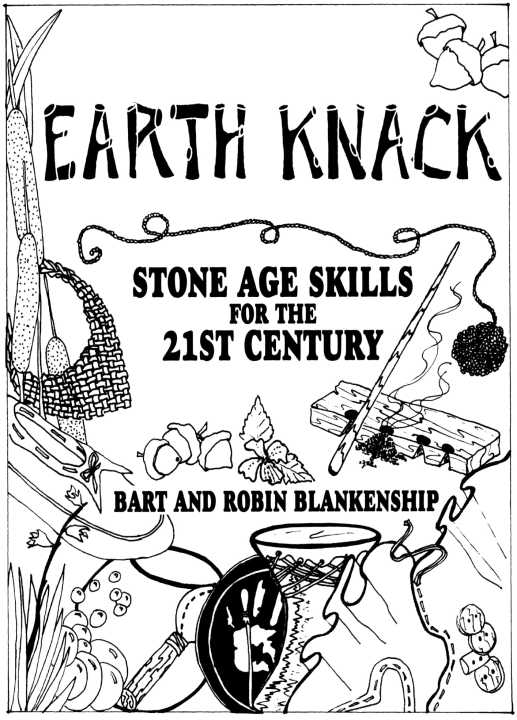





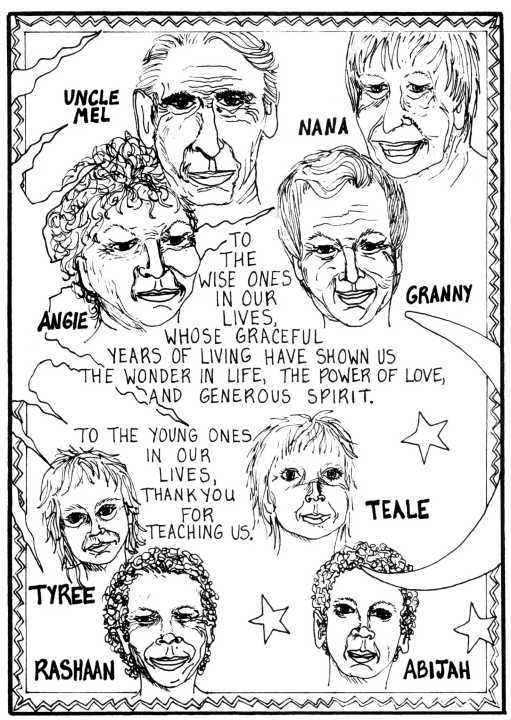



 EW OF US ARE REALLY GOING TO CHUCK IT ALL and live as hunter-gatherers in the wilds, like our Stone Age ancestors did. Yet, becoming a modern hunter-gatherer, developing a knack for living with the Earth in any enviornment, is well within our grasp. Using age-old skills, which are still perfectly applicable to our modem lifestyles, can enrich our daily lives and bring high levels of satisfaction and fullfillment.
EW OF US ARE REALLY GOING TO CHUCK IT ALL and live as hunter-gatherers in the wilds, like our Stone Age ancestors did. Yet, becoming a modern hunter-gatherer, developing a knack for living with the Earth in any enviornment, is well within our grasp. Using age-old skills, which are still perfectly applicable to our modem lifestyles, can enrich our daily lives and bring high levels of satisfaction and fullfillment.